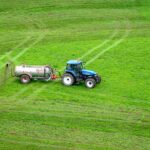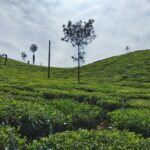The world population is increasing continually, and this increase is causing significant deterioration of soil health, and water sources. Urbanization and industrialization are also exerting negative influences on agricultural and food production activities. Alternative farming practices are on the rise for both farmers and investors. Read more to learn about aquaponics as an investment.
Aquaponics is a great way to improve food production in deteriorated lands and unfavorable climates (Abusion and Mandikiana, 2020).
What is Aquaponics
Aquaponics is an advanced system of agriculture and aquaculture based on the biomimetic natural systems and circular economy principles for minimizing the use of inputs and waste generation. It involves the use of industrial practices by impeccably incorporating sustainable intensive growth and development (Wirza and Nazir, 2020).
Aquaponics is based on the combination of two productive systems including hydroponic cultivation and recirculating aquaculture systems that involve crustaceans and fish farming in tanks while hydroponics involves food production in the soilless grow media. It is a popular and efficient food production approach for governments, researchers, missions, entrepreneurs, and individuals (Ong et al., 2021).
Why Aquaponics
Studies have reported that the aquaponics industry has crossed a mark of one billion USD. These farming systems are greatly productive and can produce 200,000 pounds yield per acre. It’s estimated that globally aquaponics will register a Compound Annual Growth Rate (CAGR) of 12.5% during 2021-2026. The United States of America and Canada are the largest contributors to aquaponic production. The partnership between the research institutions, private companies, and educational institutes is playing a huge role in technological development and socioeconomic conditions (Abbasi et al., 2022).
In this system, 90% less water is used than the dryland conventional farming. This system also supports the fast maturity of crop plants and edible portions and offers significant co-location and collaboration with the major distribution markets in the export hubs, and cities (Ezzahoui et al., 2022).
The USA is importing 90% of the seafood and the rising aquaponics farming is essentially helpful to reduce this dependency. Superior fresh that are leading suppliers of aquaponics produce in the Midwest US have expanded their aquaculture production unit from 40,000 square feet to 100,000 square feet.
Aerofarms is also a leading producer in this aspect and has greatly strengthened its technological requirements in terms of network systems and machine learning. This partnership is essentially helpful to improve food safety, quality, and quantity by the right control over the conditions such as water, light, airflow, temperature, and humidity.
The growth of aquaponic farming is significantly segmented according to geographical conditions (Africa, South America, Asia Pacific, Europe, and North America), crop type (microgreens, herbs, vegetables, and fruits), fish type (ornamental, trout, carp, catfish, and tilapia), nature of facilities (indoor vertical farms, glass or poly-based greenhouses), and use of grow media (deep water culture, nutrient film technique, media-filled beds) (Baganz et al., 2022).
Let’s get started
Aquaponics growing systems require good investment at the start but produces better results later. The major investments for aquaponics units are associated with the energy production for cooling, lighting, heating, water movement in the pumps, vehicles, freezers, computers, and other facilities (Fruscella et al., 2021).
The cost can be reduced by using natural sunlight harvesting technologies and the use renewable energy resources. There is a huge concern of regular monitoring and observation for controlling the essential parameters such as ultraviolet lights, diseases, and pest management, control of temperature, nutrients, salts, electrical conductivity (EC), and pH (Susanti et al., 2022).
An aquaponic system installed on one acre of covered, flat, and leveled area can help to make 300,000 USD per year. The operational cost for one-time installation is about 1.2 million USD. Although the situation of every investor is different the right initial investment is greatly important for the later benefits.
Cost of Components for Small Scale Aquaponic Farming (based on Spring 2022 prices)
| Name of Item | Item Quantity | Cost |
| Nutrients | 1 | $40 |
| Air pump for backup | 1 | $32 |
| Fish food | 1 | $35 |
| Uniseals | 10 | $32 |
| Water testing kit | 1 | $23 |
| Biofiltration media | 300 | $40 |
| ½ inches PVC piping | 5 | $30 |
| 1 ½ inches PVC piping | 5 | $14 |
| PVC ball valves | 1 | $19 |
| Plant holders | 1 | $9 |
| Net cups | 1 | $13 |
| Air stones | 2 | $10 |
| Air Pump | 1 | $38 |
| Water pump | 1 | $27 |
| Plant seedlings | 1 | $65 |
| Fishes | 25 | $135 |
| Planting area | 1 | $100 |
| Biofilter | 1 | $90 |
| Mechanical filter | 1 | $180 |
| Fish tank | 1 | $430 |
| Sump tank | 1 | $65 |
| $1427 |
Benefits
There are significant benefits of aquaponics food production systems in terms of safety, sustainability, freshness, and environmental production. The benefits of producing food in aquaponics are highlighted as follows.
- No contamination due to controlled application of inputs and chemicals.
- Local production is supported despite unfavorable climatic conditions and poor-quality soil.
- Consumers can get fresh food after immediate harvesting.
- The use of chemical preservatives is reduced so the chances of health hazards are also minimized.
- Packaging and transportation costs associated with long-distance trading are reduced.
- It generates more jobs in the local areas and helps to achieve food security and economic sustainability.
- There is no need to wait for a specific season or the right environmental conditions to produce the favorite food. Aquaponics systems support the year-round production of all crops and foods.
- There is no need of using soil, so the problems associated with soil management are also reduced. Soil-based cultivation creates more mess than water-based cultivation.
- Aquaponics systems offer significant control over every growing component and factor. Therefore, it is always possible to get maximum yield and quality according to the requirements.
- This system requires less energy, labor, land, and water and helps to achieve sustainable growth.
- Both fish and plants are grown in safe and contaminant-free systems. So, clean and better-quality food is produced.
- It provides two income sources and produces fewer footprints than the other cultivation systems.
- It is always possible to grow all kinds of plants by optimizing the height and length of the growing area and containers (Turnšek, et al., 2019; Zainal et al., 2021; David et al., 2022; Ghamkhar et al., 2022).
Challenges
Even though aquaponics production systems are essentially helpful to improve sustainable food production systems. There are some potential challenges and problems associated with its successful installation, monitoring, management, and harvesting (Junge et al., 2017).
This system is focused on fish growing in the tanks and the feces produced by these organisms have a variable nutrient profile and concentration. Although these nutrients are required by the plants, their composition and nature are different than the well-treated organic nutrients and synthetic chemicals. Therefore, the introduction of the right microorganisms is required to convert the nutrients from feces to plant-useable forms (Yep and Zheng, 2019).
The development and multiplication of pathogenic populations is also a major concern for aquaponics production. Growers must have to monitor the pathogens by routine testing as otherwise, it can lead to potential toxicity and contamination. The fecal elements of fish and unused food particles can also cause system blockage and improper nutrient and water flows (Zhou et al., 2022).
So, regular cleaning and management are required to get the best results. Aquaponic systems are more infrastructure and energy-intensive. The use of renewable energy sources is a good approach but thermal desalination, and thermal heating sources may not be economically feasible for all the regions around the globe (Breitenstein and Hicks, 2022).
Also, there are some social challenges associated with the use of aquaponics production systems as independent aquaponic systems are much more efficient than the traditional one loop systems. Optimizing the growth of both fish and plants is also a major challenge for efficiency and profitability (Goddek et al., 2015). The use of integrated management approaches, skills, and financial support is required to overcome the challenges on a sustainable basis.
This post was written with Fiverr by Tabinda_athar, she’s a farming and soil advocate. I hire Fiverr writers to help diversify our investing options. Subscribe to read more business, sales and investing posts. Have a lovely day.
References
Abbasi, R., Martinez, P., & Ahmad, R. (2022). The digitization of agricultural industry–a systematic literature review on agriculture 4.0. Smart Agricultural Technology, 100042.
Abusin, S. A., & Mandikiana, B. W. (2020). Towards sustainable food production systems in Qatar: Assessment of the viability of aquaponics. Global Food Security, 25, 100349.
Baganz, G. F., Junge, R., Portella, M. C., Goddek, S., Keesman, K. J., Baganz, D., … & Kloas, W. (2022). The aquaponic principle—It is all about coupling. Reviews in Aquaculture, 14(1), 252-264.
Breitenstein, M., & Hicks, A. (2022). Review and Harmonization of the Life Cycle Global Warming Impact of Five United States Aquaponics Systems. Aquacultural Engineering, 102224.
David, L. H., Pinho, S. M., Agostinho, F., Costa, J. I., Portella, M. C., Keesman, K. J., & Garcia, F. (2022). Sustainability of urban aquaponics farms: An emergy point of view. Journal of Cleaner Production, 331, 129896.
Ezzahoui, I., Abdelhouahid, R. A., Taji, K., Marzak, A., & Ghanimi, F. (2022). The aquaponic ecosystem using IOT and IA solutions. International Journal of Web-Based Learning and Teaching Technologies (IJWLTT), 17(5), 1-15.
Fruscella, L., Kotzen, B., & Milliken, S. (2021). Organic aquaponics in the European Union: towards sustainable farming practices in the framework of the new EU regulation. Reviews in Aquaculture, 13(3), 1661-1682.
Ghamkhar, R., Hartleb, C., Rabas, Z., & Hicks, A. (2022). Evaluation of environmental and economic implications of a cold‐weather aquaponic food production system using life cycle assessment and economic analysis. Journal of Industrial Ecology.
Goddek, S., Delaide, B., Mankasingh, U., Ragnarsdottir, K. V., Jijakli, H., & Thorarinsdottir, R. (2015). Challenges of sustainable and commercial aquaponics. Sustainability, 7(4), 4199-4224.
Junge, R., König, B., Villarroel, M., Komives, T., & Jijakli, M. H. (2017). Strategic points in aquaponics. Water, 9(3), 182.
Ong, D., Shang, L., Chandra, Y., Hamidi, M., & Wahab, H. A. (2021). The role of social entrepreneurship for youth purpose development. Journal of Asian Public Policy, 14(2), 272-290.
Susanti, N. D., Sagita, D., Apriyanto, I. F., Wahyu, C. E., Anggara, D. A. D., & Rahayuningtyas, A. (2022, January). Design and implementation of water quality monitoring system (Temperature, pH, TDS) in Aquaculture Using IoT at Low Cost. In 6th International Conference of Food, Agriculture, and Natural Resource (IC-FANRES 2021) (pp. 7-11). Atlantis Press.
Turnšek, M., Morgenstern, R., Schröter, I., Mergenthaler, M., Hüttel, S., & Leyer, M. (2019). Commercial aquaponics: a long road ahead. Aquaponics food production systems, 18, 453-485.
Wirza, R., & Nazir, S. (2020). Urban aquaponics farming and cities-a systematic literature review. Reviews on environmental health.
Yep, B., & Zheng, Y. (2019). Aquaponic trends and challenges–A review. Journal of Cleaner Production, 228, 1586-1599.
Zainal, A. G., Yulianto, H., & Yanfika, H. (2021, April). Financial benefits of the environmentally friendly aquaponic media system. In IOP Conference Series: Earth and Environmental Science (Vol. 739, No. 1, p. 012024). IOP Publishing.
Zhou, Y., Xia, Q., Zhang, Z., Quan, M., & Li, H. (2022). Artificial intelligence and machine learning for the green development of agriculture in the emerging manufacturing industry in the IoT platform. Acta Agriculturae Scandinavica, Section B—Soil & Plant Science, 72(1), 284-299.











